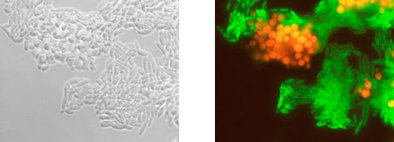Fermentative yeasts – Identification
Fast detection and specific detection of facultative and obligate fermentative yeasts
Item Number: 01230011
Lab analysis: detection of fermentative yeasts
Alcoholic as well as non-alcoholic beverages are analyzed for the presence of yeasts in general and regarding obligate and potential fermentative yeasts. Differentiation and classification between obligate fermentative yeasts is performed by applying specific gene probes. Obligate fermentative yeasts can cause damage of any product in every cell concentration. Potential fermentative yeasts can cause product damage only under certain conditions like carbonisation, sugar content or pH-value. In addition, presence of yeasts in general is determined.
Results will be provided within 3 working days after sample receipt, in case of readily enriched samples or grown colonies by the next working day.
Qualitative or quantitative detection?
Qualitative
Which method is applied?
The reliable VIT® gene probe technology.
Which requirements are important?
Product and raw material samples
- beer, wine, juices and soft drinks, minimum 100 ml
- juice concentrates, minimum 25 ml
- powder, minimum 10 g
- water samples (e.g. soda, rinsing water etc.), minimum 150 ml
Pre-enriched samples:
- Pre-enriched bouillons (10 ml) or agar plates with colonies: this allows a shorter time-to-result (results are expected for the 1st working day after sample receipt).
For an on-site analysis of your samples we recommend our test kit VIT® Spoilage Yeasts.

Your Advantages
specific detection of obligate and potential fermentative yeasts
detection of living yeasts exclusively
fast detection
highest specificity
analysis of diverse sample material possible